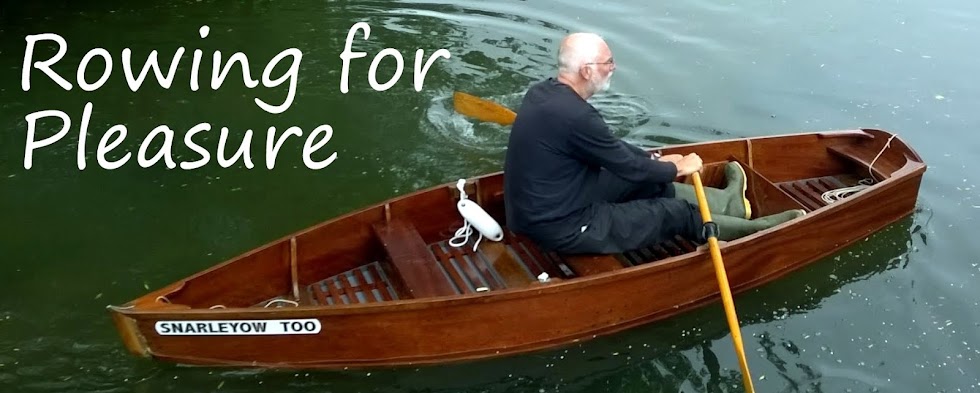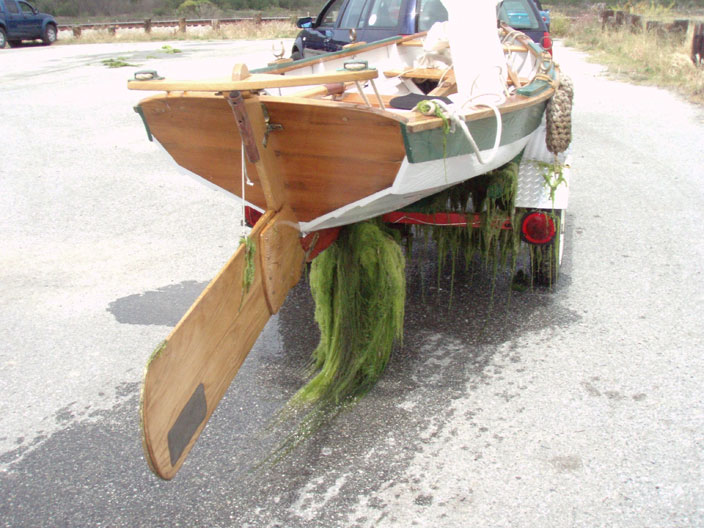 But seeing as Gav hasn't got round to putting up pics of these boats at the Museum of the Broads at Stalham yet, I'll nip in and blog them first.
But seeing as Gav hasn't got round to putting up pics of these boats at the Museum of the Broads at Stalham yet, I'll nip in and blog them first.On the right is a rowing skiff, a hull shape very similar to Thames skiffs but somewhat more stern-heavy and having a slightly bigger transom. She was built about a hundred years ago.
Next, a reed lighter. These wide and low boats would be almost completely invisible under their load of reeds (in the winter) or sedge (in the summer), carrying three quarters of a cartload. The marshman would either row from the bow (note the holes for the rowlocks or crutches as they were known locally) or quant from the stern.
 Quant poles have a hook at the lower end to get a purchase on the river bottom and a button at the top to push against, although the button is really only of use when you can walk the length of the boat rather than just stand at the stern as you would when punting. It does, however, give you something to grab when you suddenly realise that you are about to leave the quant stuck in the mud. This is possibly the most embarrassing thing that can happen to yachtsman, especially if it occurs when approaching Potter Heigham bridge under the eye of a large and appreciative audience.
Quant poles have a hook at the lower end to get a purchase on the river bottom and a button at the top to push against, although the button is really only of use when you can walk the length of the boat rather than just stand at the stern as you would when punting. It does, however, give you something to grab when you suddenly realise that you are about to leave the quant stuck in the mud. This is possibly the most embarrassing thing that can happen to yachtsman, especially if it occurs when approaching Potter Heigham bridge under the eye of a large and appreciative audience.By the way Gav, you didn't get a picture of the very nice thatched boathouse at the southern end of Barton Broad, did you? If you did, please post it - I stupidly deleted the shot I took of it during transfer to the PC.

































